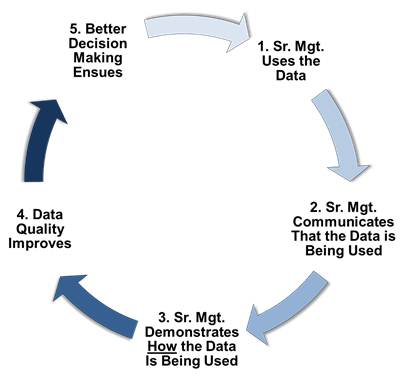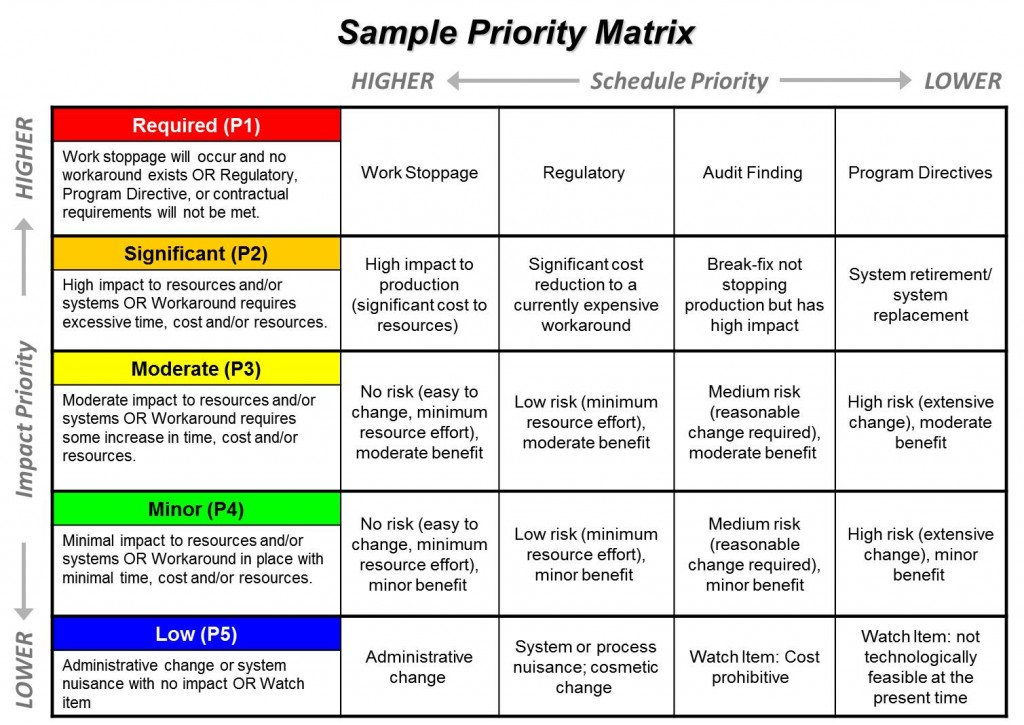Data represents a major facet of successfully implementing project portfolio management (PPM). In a previous post, I discussed how data drives the portfolio management engine and some of the key components for getting good data into the tool. Some important portfolio data types includes: financial data, resource data, schedule data, and benefits data. Leadership plays a pivotal part in the whole process from determining which data is needed to using the data for better decision making. This post will concentrate on the last part of the process—how to use the portfolio data.
Use the Portfolio Data
Data quality is never perfect at the beginning of a portfolio management process. Collecting data takes time and effort, and with so much demand on individual’s time, people do not want to waste time collecting data that is unnecessary or won’t be used. This is why it is so important for senior leaders to use the portfolio data. When leadership uses the data, they will understand what data is truly needed for higher quality decision making. Moreover, once the data gets used, the gaps in the data will be readily apparent and will give senior leaders an opportunity to reinforce the importance of the portfolio processes (that collect the data in the first place). However, using the data is only the first step in a three step process. Next, leadership needs to communicate that the data is being used.
Communicate that You Use the Portfolio Data
Communicating that the portfolio data is being used is a conscious effort on the part of the senior management team, but is something very easy to do. It can also easily be overlooked. Think about it. Project managers and resource managers can put data into the PPM system not knowing if it is simply going into a black hole or is actually helping the organization. Without communication, they may never hear whether the data is actually being used. A prime example occurs with resource data and capacity management. In order for capacity management to be successful, good data is needed, which takes a lot of effort by project managers and resource managers. If the project managers and resource managers do not believe that the data is actually being used, there will be less effort going forward in entering and maintaining the data. Even when an organization is mandated to use a PPM system, the data can be compromised by a small number of people who do not take the process seriously. Communicating that the data is being used is necessary for reinforcing the importance of the portfolio processes, yet senior leadership needs to take one more step—demonstrate how the data is being used.
Demonstrate How You Use the Portfolio Data
Communicating that the data is being used is good, but demonstrating how the data is being used is even better. This will send a clear message to the organization of how important it is to maintain accurate and up-to-date information in the portfolio system. If the data is being used to drive decisions around strategic project investments, staffing plans, bonuses, etc., then people will be more likely to spend the time to enter, update, and maintain the data. However, if the data is used to create a report that merely scratches the itch of a curious executive, then the people involved with the portfolio processes won’t have much interest in making sure that the data is accurate and up-to-date.
Using portfolio data, communicating that the portfolio data is being used, and demonstrating how the data is being used are the responsibilities of senior leadership. None of these steps are difficult, but need to be taken on a regular basis if the organization wants to be successful with portfolio management. Collecting data comes at a price, and if the data isn’t being used, it is better for the organization to stop wasting its time and focus on things that move the organization forward. A small amount of effort on the part of the senior leaders can go a long way toward making portfolio management successful and useful. Data is the fuel that runs the portfolio engine. Bad data will clog the engine; good data will help the organization sail forward. Using the data, communicating that the data is being used, and demonstrating how the data is being used will not only make the difference in being successful at portfolio management, it’s also smart business.


